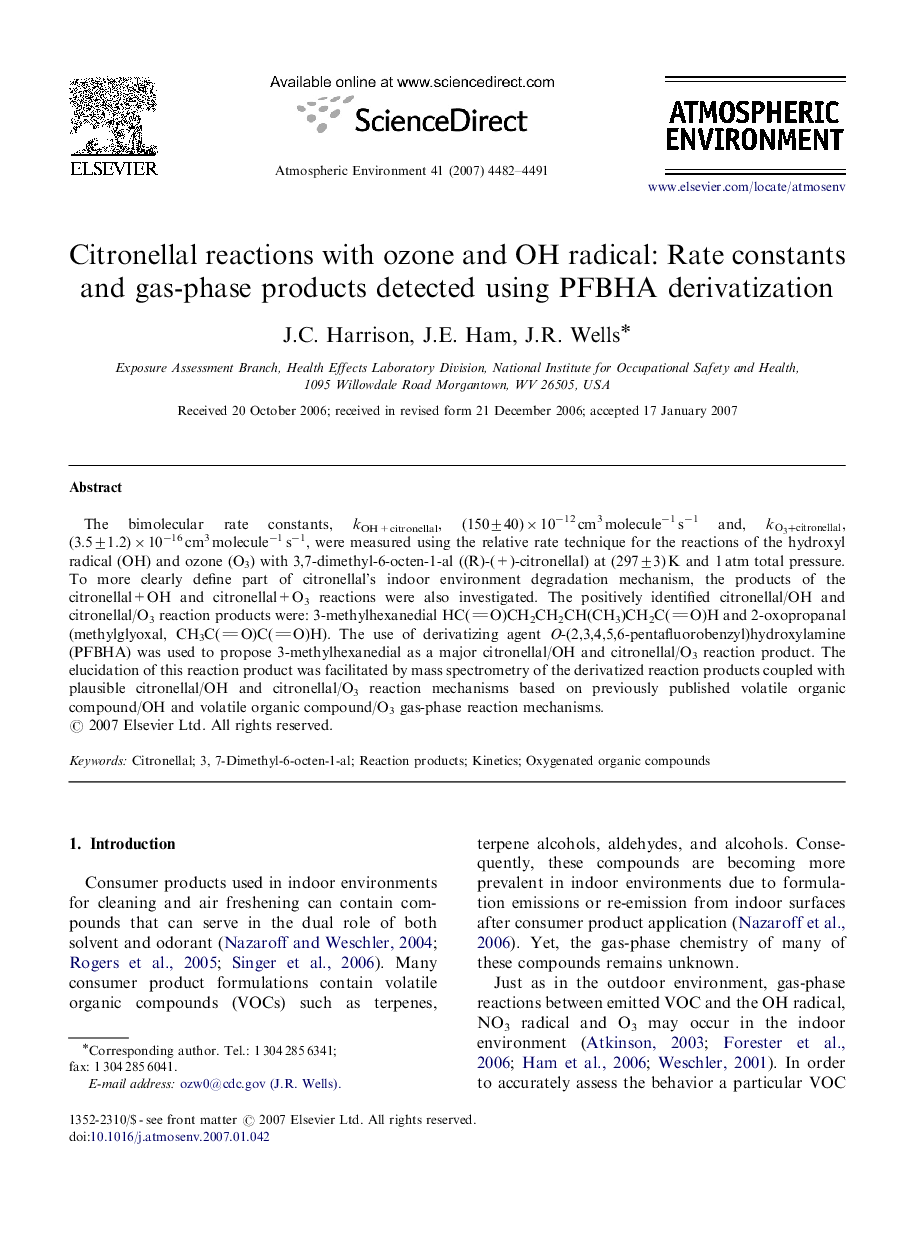| Article ID | Journal | Published Year | Pages | File Type |
|---|---|---|---|---|
| 4443281 | Atmospheric Environment | 2007 | 10 Pages |
Abstract
The bimolecular rate constants, kOH+citronellal, (150±40)Ã10â12 cm3 moleculeâ1 sâ1 and, kO3+citronellal, (3.5±1.2)Ã10â16 cm3 moleculeâ1 sâ1, were measured using the relative rate technique for the reactions of the hydroxyl radical (OH) and ozone (O3) with 3,7-dimethyl-6-octen-1-al ((R)-(+)-citronellal) at (297±3) K and 1 atm total pressure. To more clearly define part of citronellal's indoor environment degradation mechanism, the products of the citronellal+OH and citronellal+O3 reactions were also investigated. The positively identified citronellal/OH and citronellal/O3 reaction products were: 3-methylhexanedial HC(O)CH2CH2CH(CH3)CH2C(O)H and 2-oxopropanal (methylglyoxal, CH3C(O)C(O)H). The use of derivatizing agent O-(2,3,4,5,6-pentafluorobenzyl)hydroxylamine (PFBHA) was used to propose 3-methylhexanedial as a major citronellal/OH and citronellal/O3 reaction product. The elucidation of this reaction product was facilitated by mass spectrometry of the derivatized reaction products coupled with plausible citronellal/OH and citronellal/O3 reaction mechanisms based on previously published volatile organic compound/OH and volatile organic compound/O3 gas-phase reaction mechanisms.
Related Topics
Physical Sciences and Engineering
Earth and Planetary Sciences
Atmospheric Science
Authors
J.C. Harrison, J.E. Ham, J.R. Wells,
